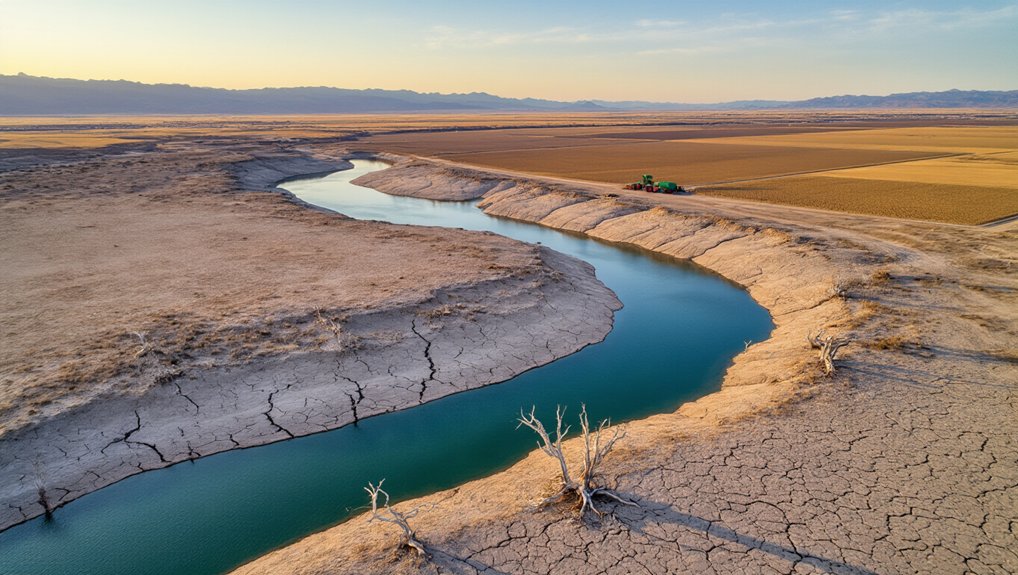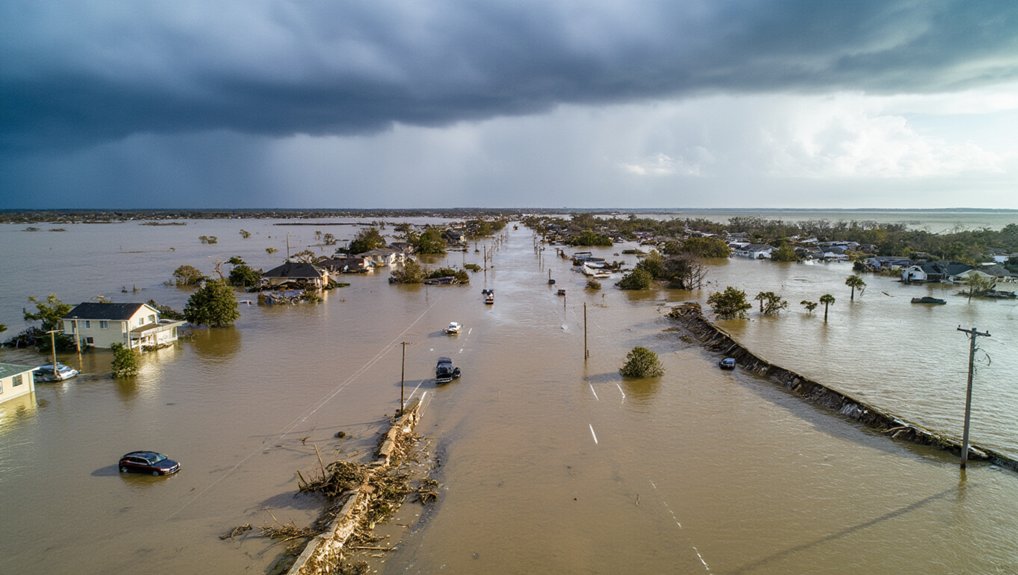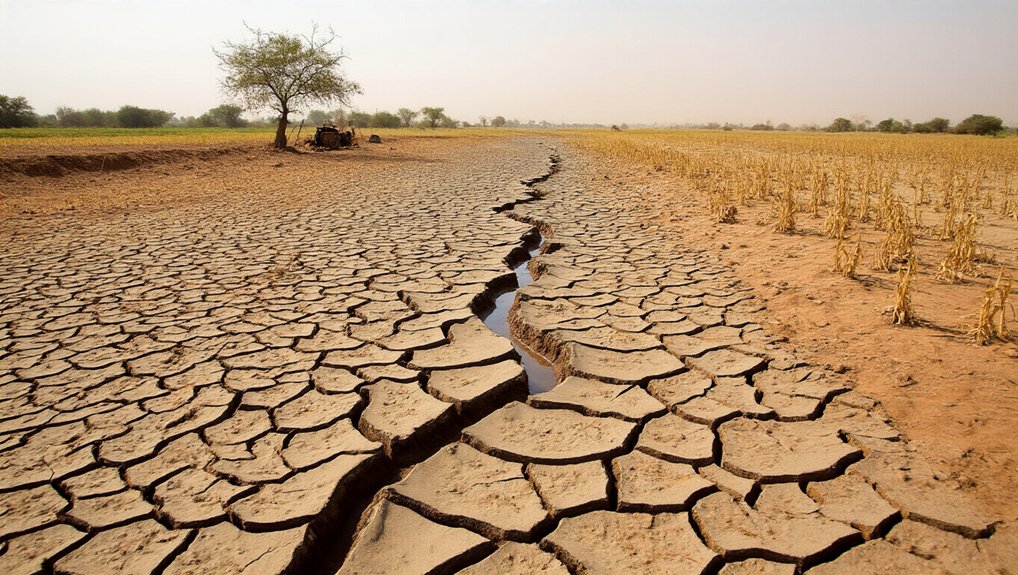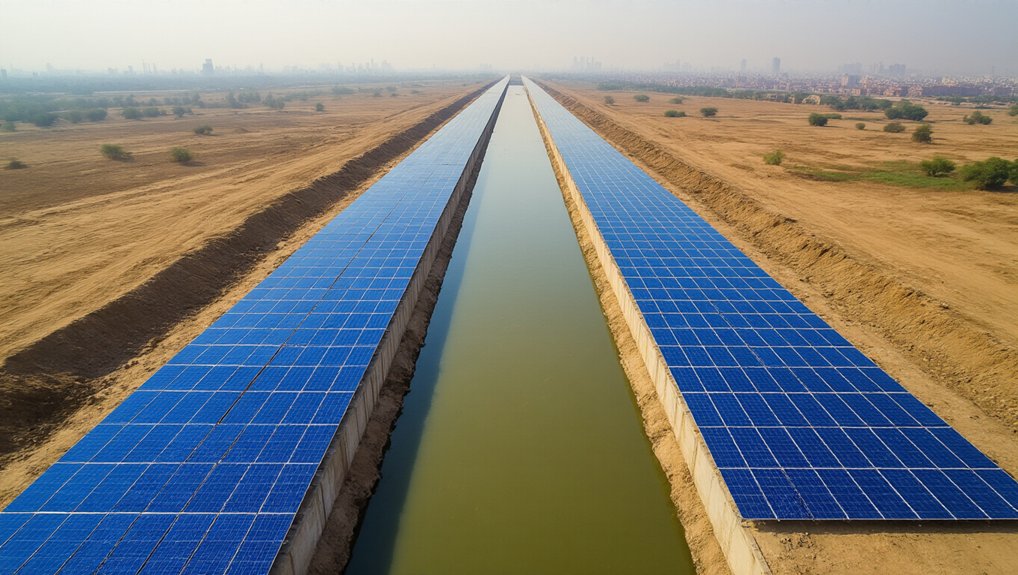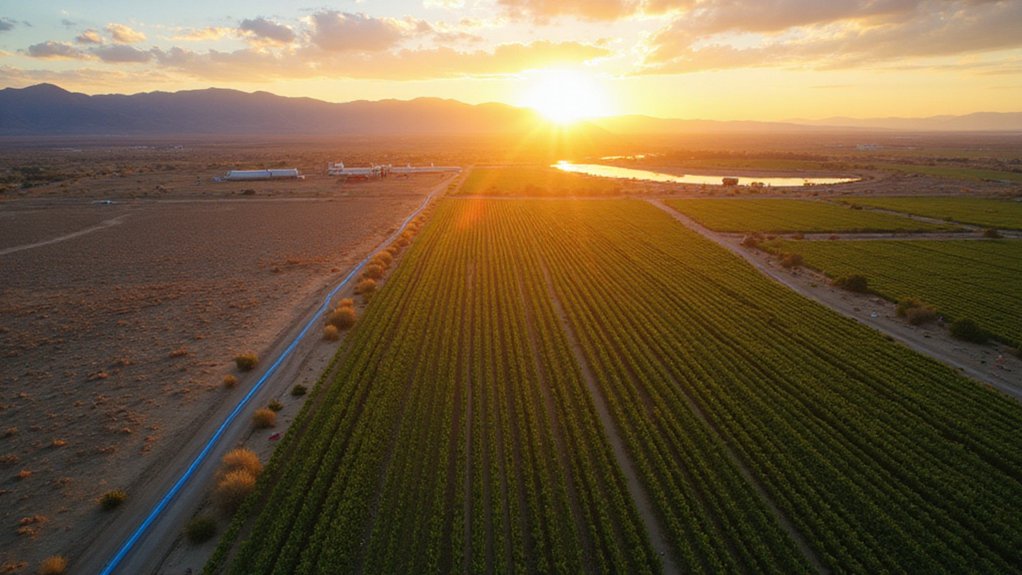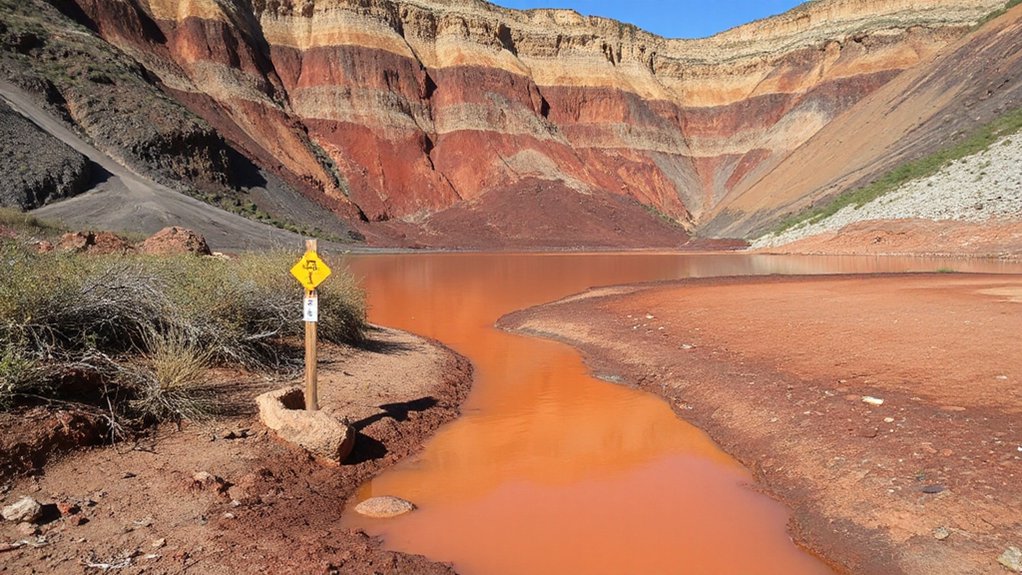As the Colorado River‘s water supply continues to shrink at an alarming rate, a full-blown crisis is unfolding across the American West.
Recent data shows Upper Colorado River Basin snowpack reached only 89% of median as of April 1, 2025, and conditions have deteriorated since. The nation’s two largest reservoirs are projected to decline further in 2025, nearing critically low levels. That’s just great.
Federal projections indicate 2025 will be another very dry year for the system that provides water to 40 million people, 30 Native tribes, and massive agricultural areas.
Federal forecasts spell disaster: another parched year ahead for the lifeline serving 40 million people and 30 tribes.
Conservation efforts? Failed. The system isn’t being replenished—it’s actively being depleted. And no one seems to have a workable solution.
Arizona is taking the brunt of the damage, facing a 512,000 acre-foot cut in 2025—that’s 30% of CAP’s normal supply and 18% of Arizona‘s Colorado River allocation.
Farmers in central Arizona are getting hammered while city dwellers barely notice. Typical.
Meanwhile, the seven Western states sharing the river can’t agree on post-2026 water-sharing rules.
There’s a massive rift between Lower Basin states (California, Arizona, Nevada) and Upper Basin states (Colorado, Utah, Wyoming, New Mexico) over who should sacrifice what.
Negotiations are stalled, raising the specter of federal intervention. Nobody wants that.
Climate change isn’t helping. Hotter, drier conditions have intensified the drought across the Colorado River Basin. The Colorado River’s average flow has decreased by 20% since 2000, with about half of this reduction directly tied to global warming.
Recent conservation measures? Drops in the bucket compared to what’s needed. Climate models project water availability will continue to decline, putting even more stress on an already failing system.
Underground, things are even worse. Groundwater is being pumped at unsustainable rates—over 1.2 million acre-feet lost annually, quadruple the surface water losses.
Since 2003, an amount of groundwater comparable to the entire capacity of Lake Mead has been extracted. Those aquifers won’t refill in our lifetime.
Without a 2026 agreement, the West faces a future of unmanaged overuse, bitter legal battles, and devastation for communities dependent on this already-strained resource.
Based on the current Tier 1 shortage declaration, nearly all reductions will affect CAP water users in Arizona rather than being distributed equally across states.
References
- https://www.latimes.com/environment/story/2025-05-30/spring-snowpack-water
- https://www.cap-az.com/cap-system/planning-and-processes/shortage-impacts/
- https://www.cap-az.com/water/water-supply/colorado-river-reductions/
- https://phys.org/news/2025-05-groundwater-rapidly-declining-colorado-river.html
- https://www.cpr.org/2025/05/27/drought-conditions-likely-to-get-worse-in-colorado-as-western-water-supplies-shrink/
